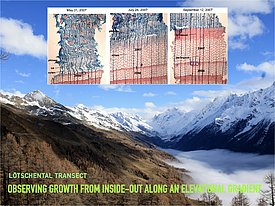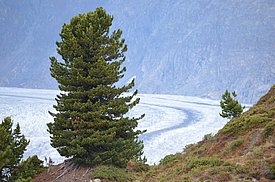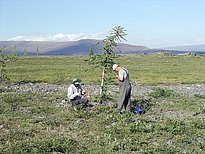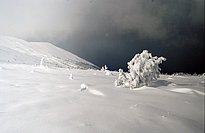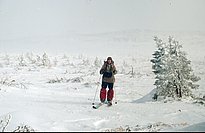
Changes at the forest line ¶
The forest line is one of the most striking boundaries between different habitats. However, as a result of land use and climate change, it is shifting in many places. We are researching what this means for the affected ecosystems and for important forest services.
Contents ¶
Definitions: ¶
Forest line: The area where subalpine or boreal forests transition to tundra or alpine grasslands – either in the mountains or at high latitudes.
Treeline (or timberline): The upper limit of tree growth in mountains or northern latitudes.
Climate change in the Lötschental valley ¶
Climate researchers predict a temperature increase of about 3°C for the next 100 years for Switzerland. This corresponds to today's temperature difference between the tree line and the valley floor of the Lötschen Valley and makes it an ideal area to investigate effects of climate change. Therefore, we have been monitoring the growth of two ecologically different species, spruce and larch, along the valley slopes since 2007.
Tree-ring research at WSL ¶
High mountain tree species in distress ¶
Swiss stone pines, which can live to be over 500 years old, characterize the biotic community at the upper timberline. But due to their long generation time, they probably cannot adapt fast enough to rapid climate change – and may therefore become locally extinct. This is what our genetic studies suggest.
More about the PiCadapt project
Climate change in the Urals ¶
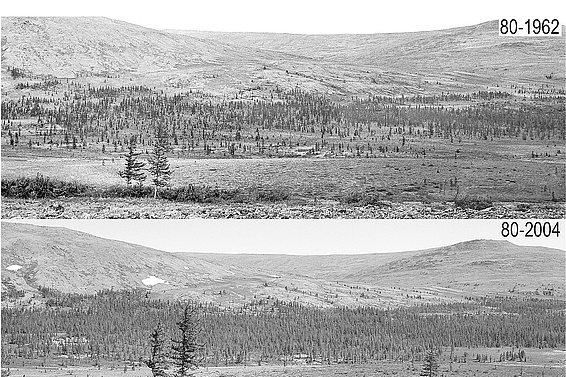
In Switzerland, human use primarily determines the forest boundary. However, in the Russian Ural Mountains, far away from civilization, the influence of climate change is directly apparent. Together with colleagues from Russia, Germany and Switzerland, we have been investigating the shift of the forest boundary in the 1500-km long Urals since 2001. Since the beginning of the 20th century, the forest line has already shifted upwards by about 50 meters. We investigate how this affects the carbon storage and nutrient ratios of soils.
Project Forest line in the Urals (Note: the project is currently suspended due to Russia's war of aggression against Ukraine.)
Forest line research at SLF ¶
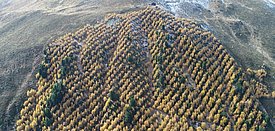
Since the 1950s, SLF researchers have been investigating the growth of trees at the forest line and interactions between trees, snow cover and avalanches in the Stillberg experimental forestation. While the main goal of research was once avalanche protection, today we are also increasingly conducting experiments on climate change.

